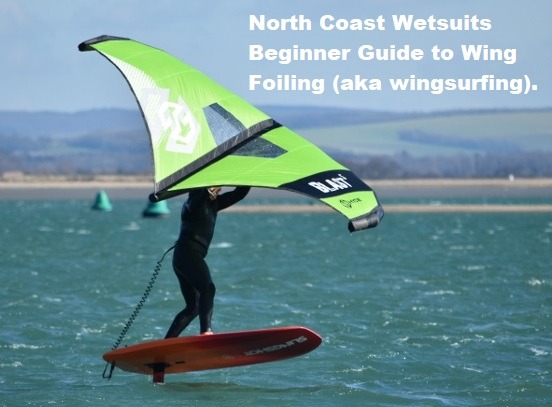Pics: Oli Lane-Peirce.
Call it what you will: wing foil, wingsurf or even wing SUP; it’s taking over the watersports world at large with everyone wanting a piece of this new fangled wing pie. With input from our sister brand – Foilshop UK – we’ve put together a few basic points about wingin’ to help you on your way (if it’s something you’re considering that is.
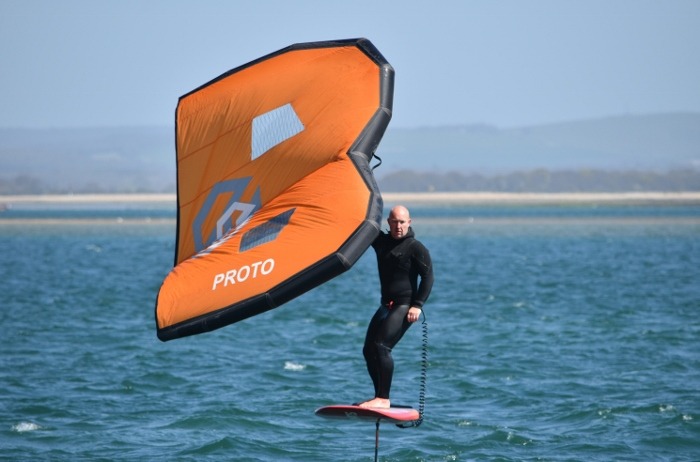
Wing history.
As soon as riders learnt to propel boards using sails (windsurfing) a few cunning mad scientists decided to try sailing sleds without having the primary source of power attached.
Windsurfing’s peak was during the 80s and in the early part of the decade Columbia River Gorge sailor, Tom Magruder, came up with the wind weapon. This early wing made good use of the Gorge’s awesome wind stats and (literally) lofted Tom to dizzying new heights. Some of his jumps, which can be seen in the vid below, were stratospheric!
Unfortunately, the Wind Weapon was deemed too technical to use and didn’t see much uptake. A few keen souls carried on the tradition over the years but it wasn’t until recently wings got their second wind, so to speak.
Hydrofoil history 101.
As with wings riding boards with hydrofoils attached is nothing new. This elevated way of flying above water has been dabbled and tinkered with for years.
Over in Maui a bunch of keanos (Laird Hamilton and co) adapted heavy, metal foils – nicked from the airchair – and cannibalized them to their own spec. Laird and Dave Kalama, to name a few pioneers, used wakeboard style boards (complete with boots and bindings) with their foils attached for tow surfing at big wave spots like Jaws (Pe’ahi). Again, though, because of the foil’s inaccessible nature, it didn’t really catch on back then.
Fast forward to now and with better manufacturing techniques, materials and hydro/aerodynamic understanding foils exploded back onto the scene a few years back. Affordability for the masses also played a part, as well as the cross discipline appeal of foiling. Around the same time some bright spark had the lightbulb moment of combining foils/boards with inflatable wings – rather than the rigid type we’d already seen.
Job’s a good ‘un, Fanny’s your aunt and voila! Wing foiling is born. An accessible, (fairly) affordable and much more efficient way of riding hydrofoils with wind ‘engines’ the source of power.
Wingin’ and wangin’.
Inflatable wings, that take minutes to set up, don’t require any other component parts (except for a wrist leash) and paired with new school (modular) hydrofoils and compact foil specific boards really get a lot of people’s juices flowing.
Once technique is nailed wing foiling can a light or strong wind sport that doesn’t require a quiver of gear – unlike windsurfing or kitesurfing. One wing can cover a rider’s wind range across a real broad spectrum. Same with the board and foil.
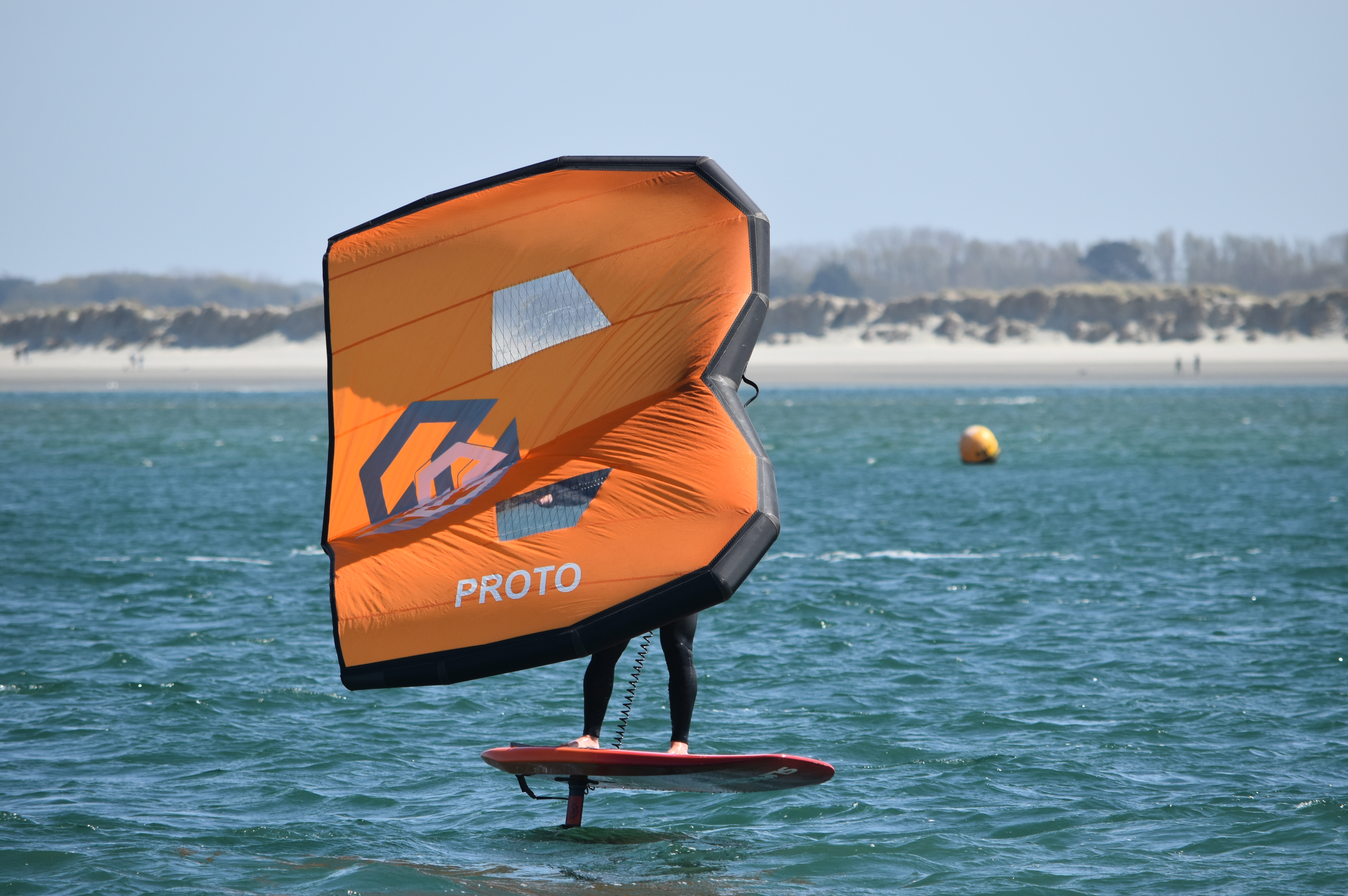
Another advantage of wing foiling is the gear’s super compact and can be broken down to fit neatly in the back of a small car. No need for a van. In fact, you could quite happily cart your wing foil gear via converted moped should you feel the need. And with the introduction of inflatable boards the whole set up can be even easier to transport and store. The tangibility of such performance orientated kit, which comes as a neat little package, is an attractive prospect.
Learning to wing foil.
For anyone with windsurf, kitesurf or even dinghy sailing experience learning to use a wing will be fairly intuitive. Wings do have a few subtle, nuanced differences but by and large wing handling is quick to learn.
Many riders choose learn basic wing handling technique in non-foiling mode aboard a stand up paddle board. This can be a good route, although be aware that unlike foil boards (which are frictionless, and therefore hyper efficient when flying), wingin’ on a SUP can be quite pedestrian in light winds.
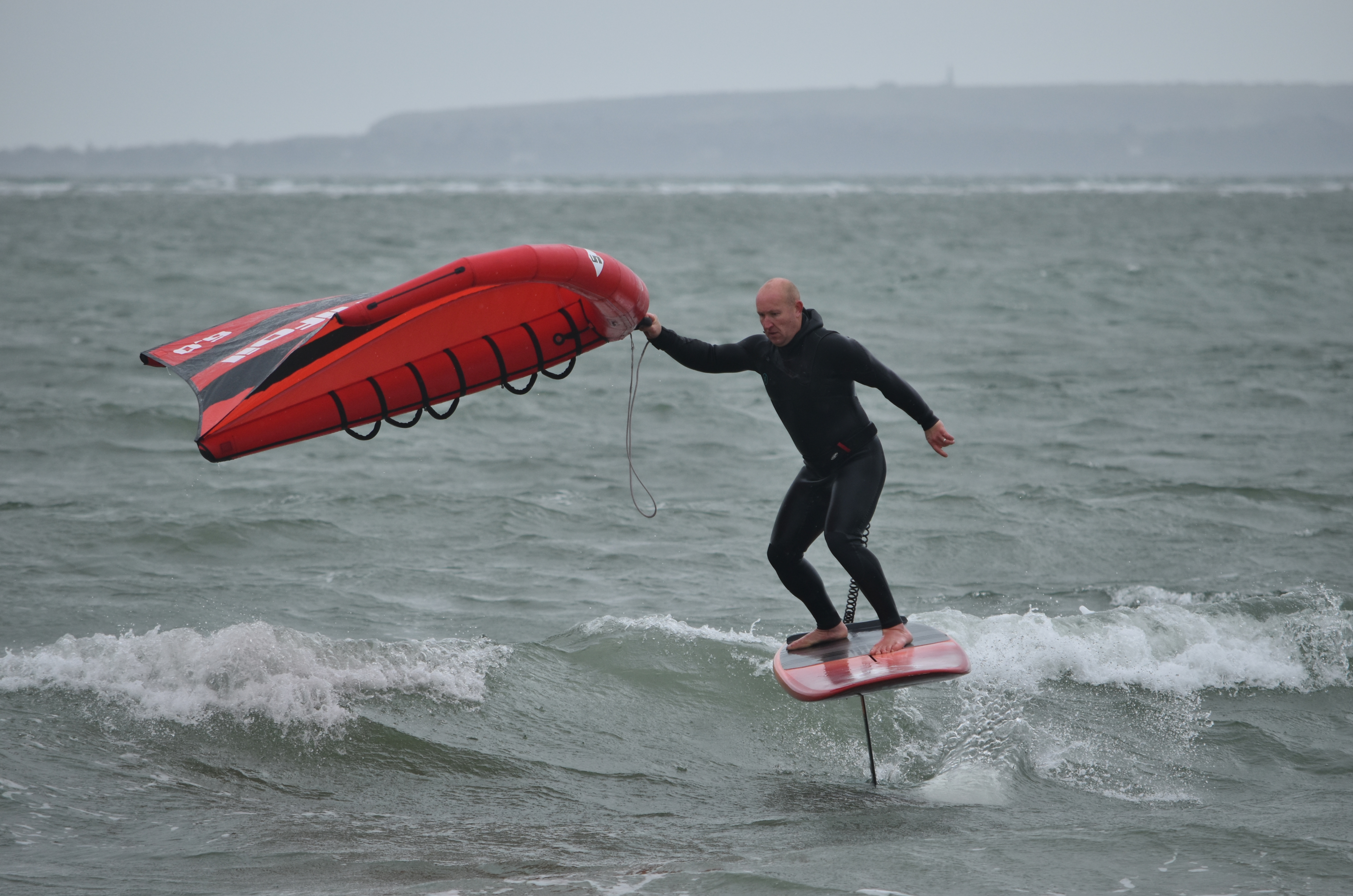
Moving on from the wing learning how to use the foil is next. Those with access can be towed by a boat or ski. This is a good method of experiencing the foil’s lift and how it behaves. Controlling and sustaining ride height is next. Once that’s sorted it’s a case of combining the two.
Wind: more needed than you’d think.
The biggest thing beginner wingers need is stomping the skills of getting the board to release and he/she pop up on foil. Foil specific boards have all manner of colourful designs and shapes. Hull chines and channels are shaped to aid breaking water surface tension, reducing drag and doing everything possible to allow the foil to engage.
Whilst an air filled ‘engine’ is lovely to hold, transport and store it’s actually an inefficient power source because of this very fact. Inflatable wing foil wings bend and bow as gusts hit meaning a specific technique needs to be learnt to get it working. Pumping, in tandem with the foil, is a skill every winger needs to get under their belt. It can be frustrating to start with – especially if riders go out in too light wind. Best course of action is go when it blowy and be a little overpowered. The beauty of an inefficient power source is it can depower easily so there’s not as much of a concern about being overcome by wind. As riders become more aux fait with the feels and nuances of wingin’ he/she can start going out in lighter winds with smaller gear.
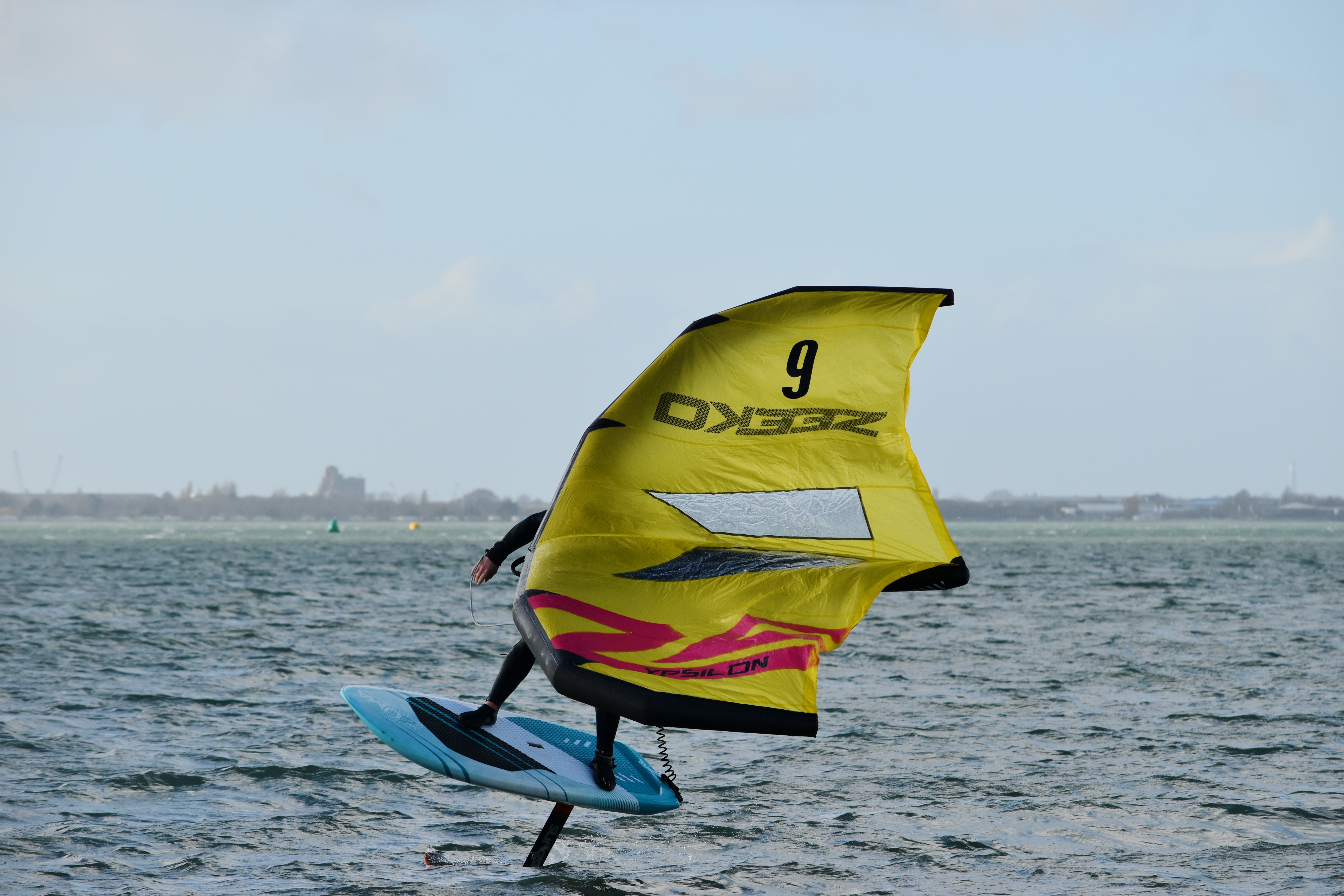
Versatility guaranteed.
Wings give a great deal of versatility to a rider. You can wing foil nearly anywhere there’s water and breeze. Unlike kitesurfing, for instance, which can be dangerous in gusty offshore locations. Wing foiling is therefore arguably much safer. If it all goes Pete then simply pack your wing down and paddle your kit back (as long as you’re riding a board with enough float!). We’re now seeing wing foilers taking to the brine at previously inaccessible spots.
But it doesn’t stop there. If you own a wing then you can use this in tandem with a skateboard (or mountain board) on land, with skis/snowboards in the white stuff or ditch the board completely and go dune jumping!
Wingin’ safety.
As with all things water safety should be kept in mind when learning how to wing foil. Hydrofoils can be dangerous if you land on them so a helmet, impact protection vest and an additional layer of rubber wouldn’t go amiss – at least during the learning and improvement phases.
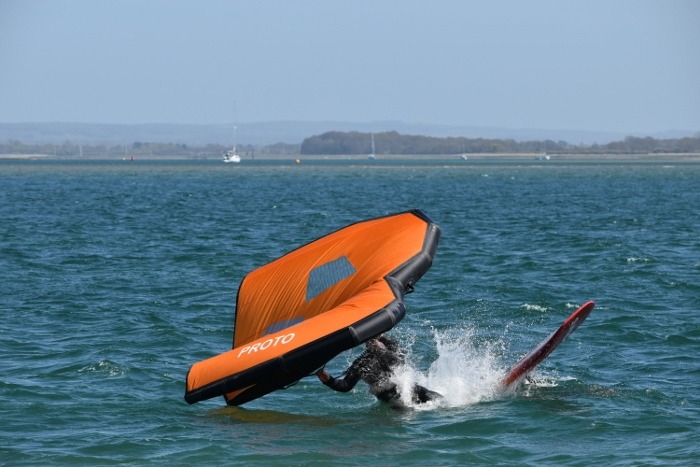
Progression with any sport means more risk start to be taken. Knowing your environment and being able to read the conditions is key. For instance: if you’re about to start riding in a tidal estuary you should be aware of tide times, how tides work and how this flow can impact your wingin’ – for better or worse.
It might also be worth taking a means of attracting attention should the wind die and/or you get into difficulty.
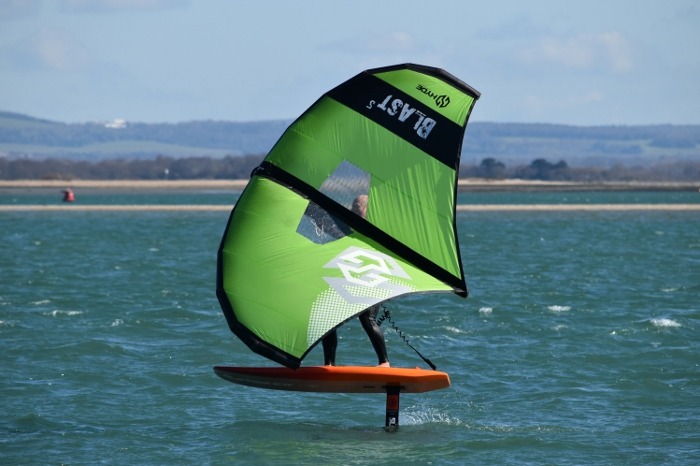
Wing foiling kit.
A few considerations when choosing your first wing foiling set up.
The foil’s wing should be at the larger end of the spectrum to encourage early lift and improved stability once at height. Going too small is a mistake many make.
Your wing foil board should have plenty of float. There’s a load of hype about riding small sleds but volume, width and length (to some degree) will be your friends. + 20L your body weight in kg is the general rule of thumb, although this could’ve just randomly plucked from thin air. Chop, gusty winds and tidal flow will work against you so if in doubt go slightly bigger. You can always change down later.
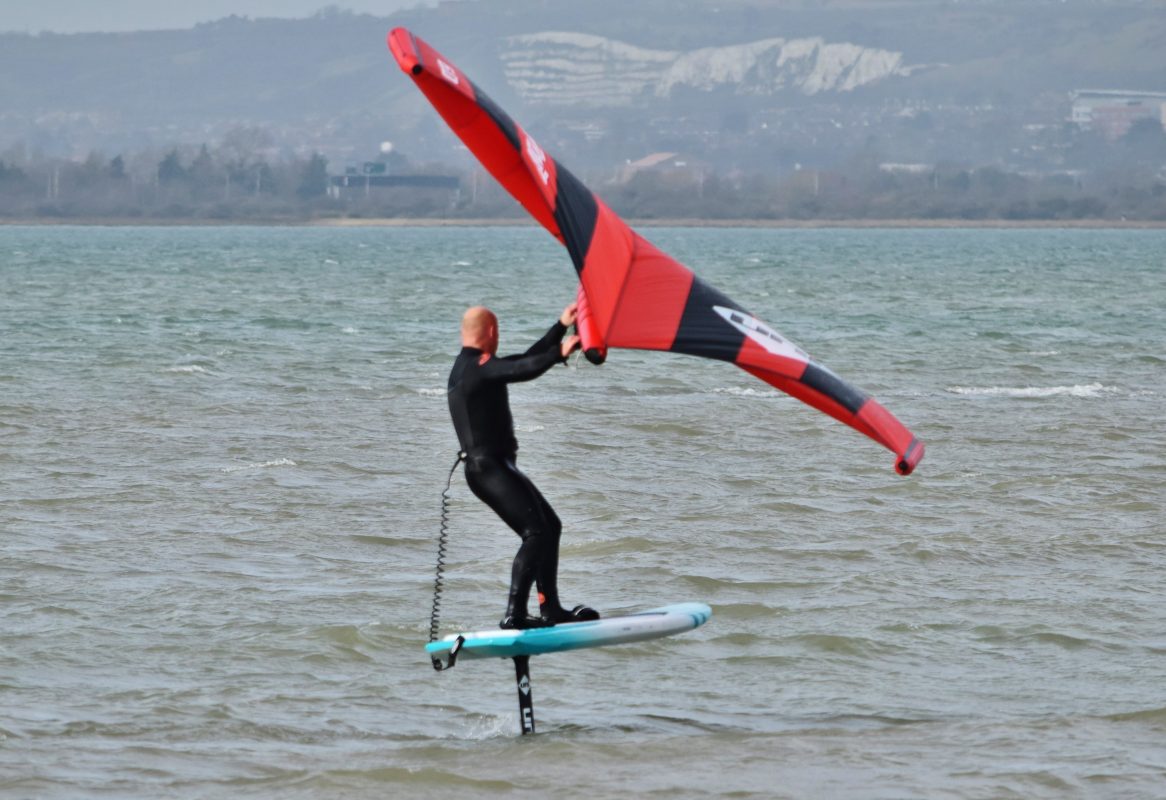
As for the wing itself the size you plump for is down to you. If you want ultimately light wind performance (12 knots and under) you’ll need something bigger. Of course, body weight plays a part. A 90kg rider we know uses a 7m wing for these conditions, changing to a 6m once wind strengths hit 15knts or so. There’s no science behind this, however, as rider input and technique could see the same weight rider foiling on a smaller wing in the same wind strength.
The future of wing foiling.
Wingin’ is still a young sport. The door’s wide open in terms of where it can go. Some riders love wing surfing element while others prefer throwing down all manner of mind bending tricks. For the masses it may stick to the tried and tested freeriding formula.
It’ll be an interesting few years for winging as industry insider predictions suggest wing foiling could eclipse all other wind driven sports. But then, we’ve heard this before so only time will tell.
If you have any questions about wings, foils foil boards or other gear for wingin’ then let us know.

